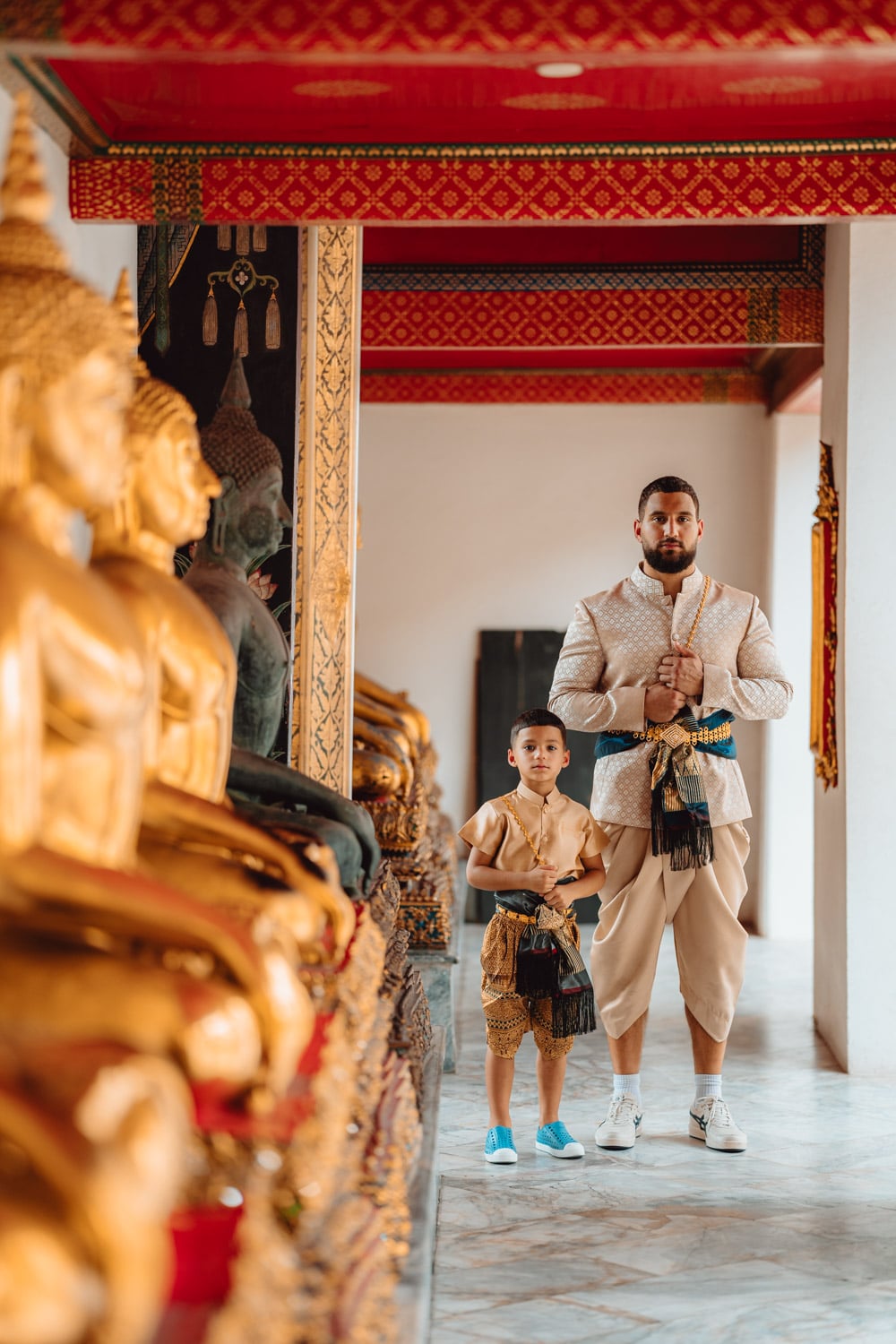The ethereal qualities of early morning light in Bangkok create a magical canvas for traditional Thai costume photography, transforming ordinary locations into extraordinary backdrops for cultural portraiture. As the first rays of sunlight pierce through the city’s morning haze, I find myself already setting up equipment at carefully scouted locations, preparing to capture the interplay between natural light and the intricate details of traditional Thai dress that has fascinated photographers for generations.
The relationship between light and Thai silk is particularly mesmerizing during the golden hours of dawn. The fabric’s natural sheen responds differently to light throughout the day, but it’s during these precious morning moments that its true character emerges. The way early morning light catches the subtle variations in Thai silk weaving can transform a simple portrait into something truly extraordinary,” I explain to clients who might initially question our pre-dawn call times. Those seeking authentic traditional attire for these early morning sessions often work with specialized Thai costume rental services that understand the importance of selecting garments that photograph well in natural light.
Understanding the behavior of light in Bangkok’s unique atmospheric conditions is crucial for successful traditional costume photography. The city’s morning air, often heavy with moisture, creates a natural diffusion that softens shadows and adds depth to photographs. This atmospheric phenomenon is particularly beneficial when photographing the intricate details of traditional Thai headdresses and jewelry, as the soft light helps prevent harsh reflections while maintaining the dimensional qualities of these elaborate accessories.
The progression of light throughout the morning hours requires constant adaptation in photographic technique. As the sun climbs higher, the character of light changes dramatically, necessitating quick adjustments in camera settings and positioning. The challenge lies in maintaining the delicate balance between highlighting the costume’s details while preserving the natural skin tones of the subject. This dance with light continues throughout the day, with each hour presenting its own unique opportunities and challenges.
Mid-morning light brings its own set of considerations for traditional costume photography. The increasing intensity of sunlight can be both friend and foe, creating dramatic contrasts that must be carefully managed. During these hours, I often seek out locations that offer natural shade, such as the covered walkways of traditional Thai architecture or the dappled light beneath Bangkok’s abundant tropical foliage. These environments provide perfect conditions for capturing the subtle textures and patterns of traditional Thai textiles while protecting subjects from the intensifying heat.
The approach to lighting dramatically shifts as we move into the afternoon hours. The harsh overhead sun between noon and early afternoon typically signals a break in outdoor shooting, as this lighting can flatten the dimensional qualities of traditional costumes and create unflattering shadows. This time is often utilized for indoor location scouting or carefully controlled shooting environments where supplementary lighting can be employed to mimic the more favorable conditions of early morning or late afternoon.
As the day progresses toward late afternoon, a second window of optimal natural light emerges. The quality of light during the evening golden hour differs substantially from its morning counterpart, offering warmer tones and longer shadows that can add drama and dimension to traditional costume photography. The lower angle of the sun during these hours creates opportunities for backlighting techniques that make Thai silk appear to glow from within, creating ethereal effects that are particularly striking in photographs.
The final hours before sunset present some of the most challenging yet rewarding conditions for Thai costume photography. The rapidly changing light requires quick decision-making and precise timing, but the results can be spectacular. The warm, golden light of late afternoon has an almost magical quality when it interacts with the metallic threads often woven into traditional Thai garments, creating images that capture both the physical beauty of the costumes and their cultural significance.
The mastery of natural light in traditional Thai costume photography extends beyond technical proficiency with camera equipment. It requires an understanding of how different fabrics and materials respond to various lighting conditions, as well as the ability to anticipate and adapt to Bangkok’s ever-changing atmospheric conditions. This knowledge, combined with careful timing and location selection, allows for the creation of images that not only document traditional Thai dress but elevate it to an art form.
The complex relationship between light and traditional Thai costume continues to evolve as photography technology advances. Modern digital cameras offer unprecedented ability to capture the subtleties of light interaction with traditional materials, while maintaining the authentic appearance of both textiles and skin tones. However, the fundamental principles of working with natural light remain unchanged, rooted in an understanding of how different times of day affect the character and quality of available light.
The technical aspects of lighting traditional Thai costume must always be balanced against practical considerations for the comfort and experience of the subject. The intense heat of Bangkok’s climate means that outdoor sessions must be carefully timed to avoid the worst of the day’s temperature, particularly when subjects are wearing multiple layers of traditional clothing. This practical necessity aligns fortuitously with the optimal lighting conditions of early morning and late afternoon, creating a natural rhythm for traditional costume photography in Bangkok.
The ability to read and work with natural light throughout the day has become increasingly important as traditional Thai costume photography moves away from controlled studio environments. The authenticity of images captured in natural light, particularly during the golden hours, creates a connection to Thailand’s cultural heritage that resonates deeply with viewers. These photographs help preserve not only the visual appearance of traditional dress but also the context in which these garments were historically worn and appreciated.
The ethereal qualities of early morning light in Bangkok create a magical canvas for traditional Thai costume photography, transforming ordinary locations into extraordinary backdrops for cultural portraiture. As the first rays of sunlight pierce through the city’s morning haze, I find myself already setting up equipment at carefully scouted locations, preparing to capture the interplay between natural light and the intricate details of traditional Thai dress that has fascinated photographers for generations.
The relationship between light and Thai silk is particularly mesmerizing during the golden hours of dawn. The fabric’s natural sheen responds differently to light throughout the day, but it’s during these precious morning moments that its true character emerges. “The way early morning light catches the subtle variations in Thai silk weaving can transform a simple portrait into something truly extraordinary,” I explain to clients who might initially question our pre-dawn call times. Those seeking authentic traditional attire for these early morning sessions often work with <a href=”http://siamcrown.com”>specialized Thai costume rental services</a> that understand the importance of selecting garments that photograph well in natural light.
Understanding the behavior of light in Bangkok’s unique atmospheric conditions is crucial for successful traditional costume photography. The city’s morning air, often heavy with moisture, creates a natural diffusion that softens shadows and adds depth to photographs. This atmospheric phenomenon is particularly beneficial when photographing the intricate details of traditional Thai headdresses and jewelry, as the soft light helps prevent harsh reflections while maintaining the dimensional qualities of these elaborate accessories.
The progression of light throughout the morning hours requires constant adaptation in photographic technique. As the sun climbs higher, the character of light changes dramatically, necessitating quick adjustments in camera settings and positioning. The challenge lies in maintaining the delicate balance between highlighting the costume’s details while preserving the natural skin tones of the subject. This dance with light continues throughout the day, with each hour presenting its own unique opportunities and challenges.
Mid-morning light brings its own set of considerations for traditional costume photography. The increasing intensity of sunlight can be both friend and foe, creating dramatic contrasts that must be carefully managed. During these hours, I often seek out locations that offer natural shade, such as the covered walkways of traditional Thai architecture or the dappled light beneath Bangkok’s abundant tropical foliage. These environments provide perfect conditions for capturing the subtle textures and patterns of traditional Thai textiles while protecting subjects from the intensifying heat.
The approach to lighting dramatically shifts as we move into the afternoon hours. The harsh overhead sun between noon and early afternoon typically signals a break in outdoor shooting, as this lighting can flatten the dimensional qualities of traditional costumes and create unflattering shadows. This time is often utilized for indoor location scouting or carefully controlled shooting environments where supplementary lighting can be employed to mimic the more favorable conditions of early morning or late afternoon.
As the day progresses toward late afternoon, a second window of optimal natural light emerges. The quality of light during the evening golden hour differs substantially from its morning counterpart, offering warmer tones and longer shadows that can add drama and dimension to traditional costume photography. The lower angle of the sun during these hours creates opportunities for backlighting techniques that make Thai silk appear to glow from within, creating ethereal effects that are particularly striking in photographs.
The final hours before sunset present some of the most challenging yet rewarding conditions for Thai costume photography. The rapidly changing light requires quick decision-making and precise timing, but the results can be spectacular. The warm, golden light of late afternoon has an almost magical quality when it interacts with the metallic threads often woven into traditional Thai garments, creating images that capture both the physical beauty of the costumes and their cultural significance.
The mastery of natural light in traditional Thai costume photography extends beyond technical proficiency with camera equipment. It requires an understanding of how different fabrics and materials respond to various lighting conditions, as well as the ability to anticipate and adapt to Bangkok’s ever-changing atmospheric conditions. This knowledge, combined with careful timing and location selection, allows for the creation of images that not only document traditional Thai dress but elevate it to an art form.
The complex relationship between light and traditional Thai costume continues to evolve as photography technology advances. Modern digital cameras offer unprecedented ability to capture the subtleties of light interaction with traditional materials, while maintaining the authentic appearance of both textiles and skin tones. However, the fundamental principles of working with natural light remain unchanged, rooted in an understanding of how different times of day affect the character and quality of available light.
The technical aspects of lighting traditional Thai costume must always be balanced against practical considerations for the comfort and experience of the subject. The intense heat of Bangkok’s climate means that outdoor sessions must be carefully timed to avoid the worst of the day’s temperature, particularly when subjects are wearing multiple layers of traditional clothing. This practical necessity aligns fortuitously with the optimal lighting conditions of early morning and late afternoon, creating a natural rhythm for traditional costume photography in Bangkok.
The ability to read and work with natural light throughout the day has become increasingly important as traditional Thai costume photography moves away from controlled studio environments. The authenticity of images captured in natural light, particularly during the golden hours, creates a connection to Thailand’s cultural heritage that resonates deeply with viewers. These photographs help preserve not only the visual appearance of traditional dress but also the context in which these garments were historically worn and appreciated.


